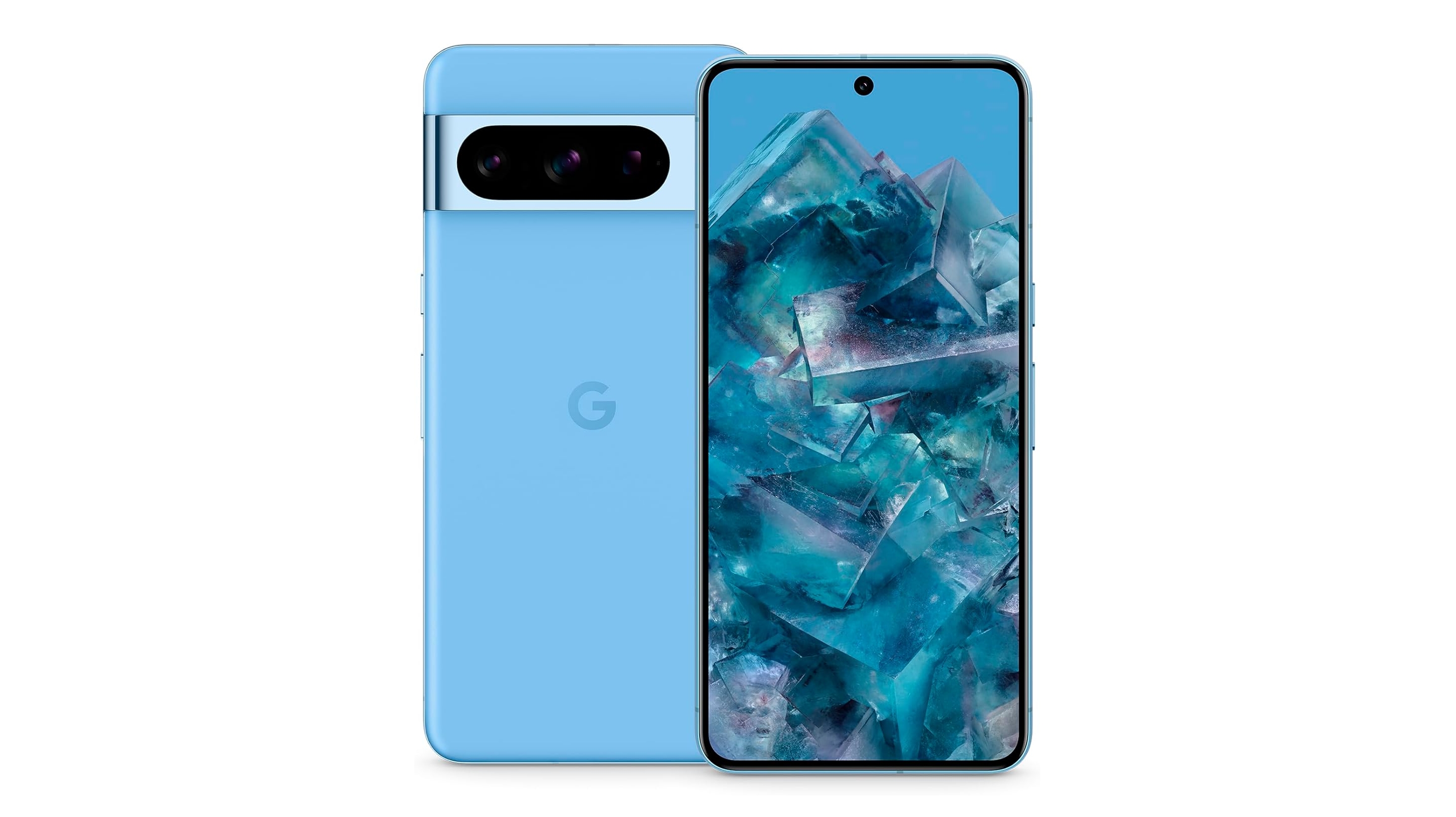
Weight: 213g
Dimensions: 162.6 x 76.5 x 8.8mm
Screen size: 6.7-inch
Resolution: 1344 x 2992
CPU: Tensor G3
RAM: 12GB
Storage: 128GB/256GB/512GB/1TB
Battery: 5,050mAh
Rear camera: 50MP+48MP+48MP
Front camera: 10.5MP
The Pixel 8 Pro has a superb screen and clever cameras, but it's let down slightly by a lack of power relative to the iPhone 15 Pro.
Pros
- Great new cameras
- Better battery life
- A very bright screen
Cons
- More expensive than before
- Some AI features feel creepy
- Less powerful than rivals
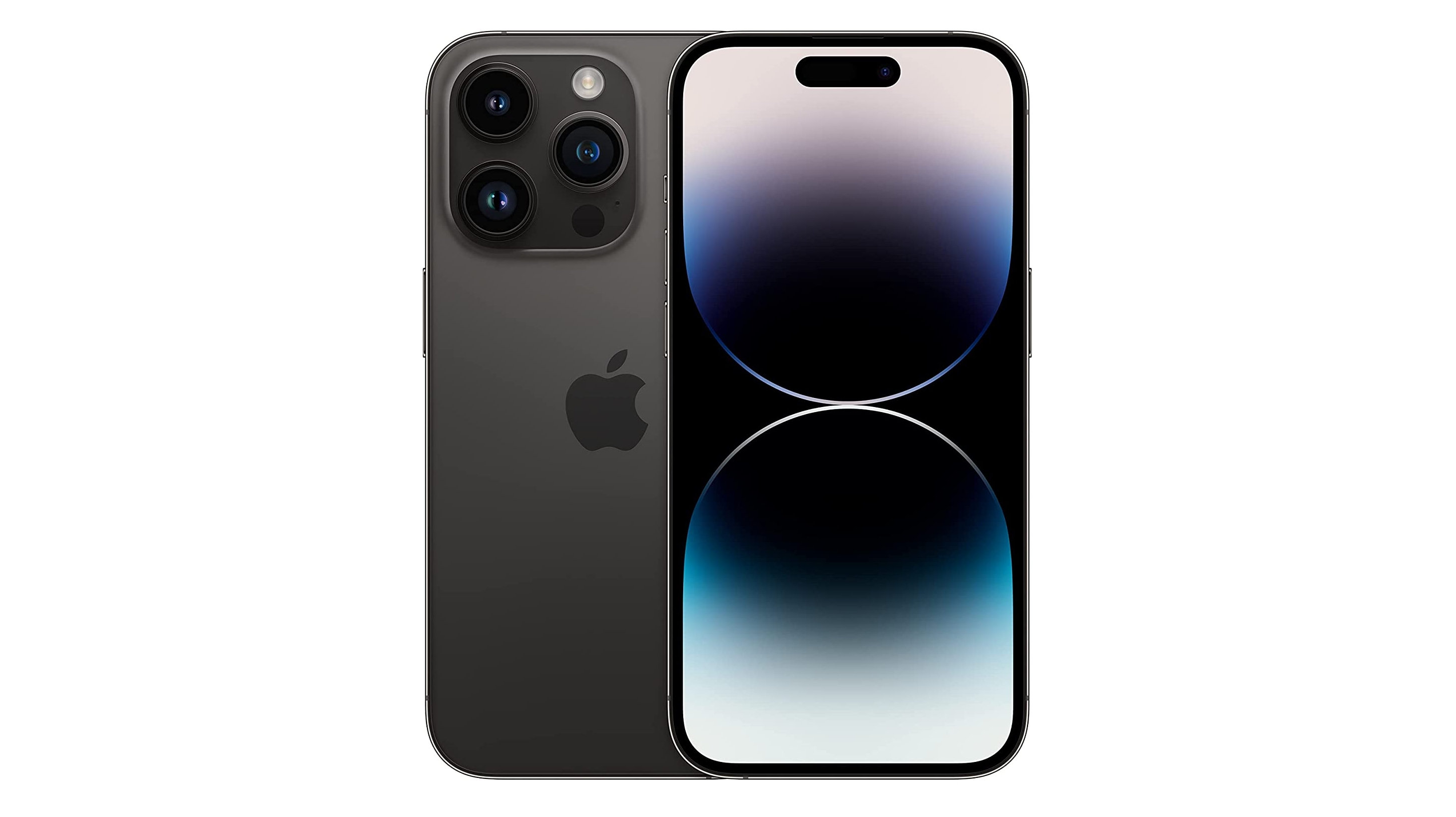
Weight: 206g
Dimensions: 147.5 x 71.5 x 7.9mm
Screen size: 6.1-inch
Resolution: 1179 x 2556
CPU: A16 Bionic
RAM: 6GB
Storage: 128GB/256GB/512GB/1TB
Battery: 3,200mAh
Rear camera: 48MP+12MP+12MP
Front camera: 12MP
The iPhone 14 Pro lacks USB-C and its chipset is no longer new, but otherwise this isn't far off matching the iPhone 15 Pro, and it remains a great phone.
Pros
- Exquisite design
- High-quality cameras
- Useful Dynamic Island
Cons
- No USB-C
- No Action Button
- Less powerful
We recently ran through a comparison of the Google Pixel 8 Pro vs iPhone 15 Pro, two similarly priced flagship phones and the champions of Android and iOS respectively. Our conclusion, putting aside platform allegiances, was that the iPhone 15 Pro was the slightly more accomplished phone of the two. That got us to thinking about the iPhone 15 Pro’s predecessor, the iPhone 14 Pro.
Given the incremental nature of Apple’s yearly smartphone updates, not to mention the company’s enviable legacy support and custom silicon advantage, could the 2022 iPhone Pro model be a more affordable alternative to the 2023 Google Pixel 8 Pro?
It’s a fascinating comparison to make, and one we’re going to have to break down point by point. This is going to be a close one, so read on for our Google Pixel 8 Pro vs iPhone 14 Pro showdown.
Google Pixel 8 Pro vs iPhone 14 Pro: specs comparison
Before we look more closely at the similarities and differences between the Google Pixel 8 Pro vs iPhone 14 Pro, here’s a list of their core specs, so you can see how they stack up at a glance, on paper.
| Google Pixel 8 Pro | iPhone 14 Pro | |
|---|---|---|
| Dimensions: | 162.6 x 76.5 x 8.8mm | 147.5 x 71.5 x 7.9mm |
| Weight: | 213g | 206g |
| Display: | 6.7-inch 'Super Actua' LTPO OLED | 6.1-inch 'ProMotion Super Retina XDR' OLED |
| Resolution: | 1344 x 2992 | 1179 x 2556 |
| Refresh rate: | Adaptive 1Hz to 120Hz | Adaptive 1Hz to 120Hz |
| Chipset: | Google Tensor G3 | A16 Bionic |
| RAM: | 12GB (LPDDR5X) | 6GB |
| Storage: | 128GB, 256GB, 512GB, 1TB (UFS 3.1) | 128GB, 256GB, 512GB, 1TB |
| Rear cameras: | 50MP wide, 48MP ultra-wide, 48MP 5x zoom | 48MP wide, 12MP ultra-wide, 12MP 3x telephoto |
| Front camera: | 10.5MP | 12MP |
| Battery: | 5,050mAh | 3,200mAh |
| Charging: | 30W wired, 23W wireless (2nd-gen Pixel Stand), 12W wireless (Qi) | 20W wired, 15W wireless (MagSafe), 7.5W wireless (Qi) |
| Colors: | Obsidian, Porcelain, Bay | Space Black, silver, gold, Deep Purple |
Google Pixel 8 Pro vs iPhone 14 Pro: price and availability
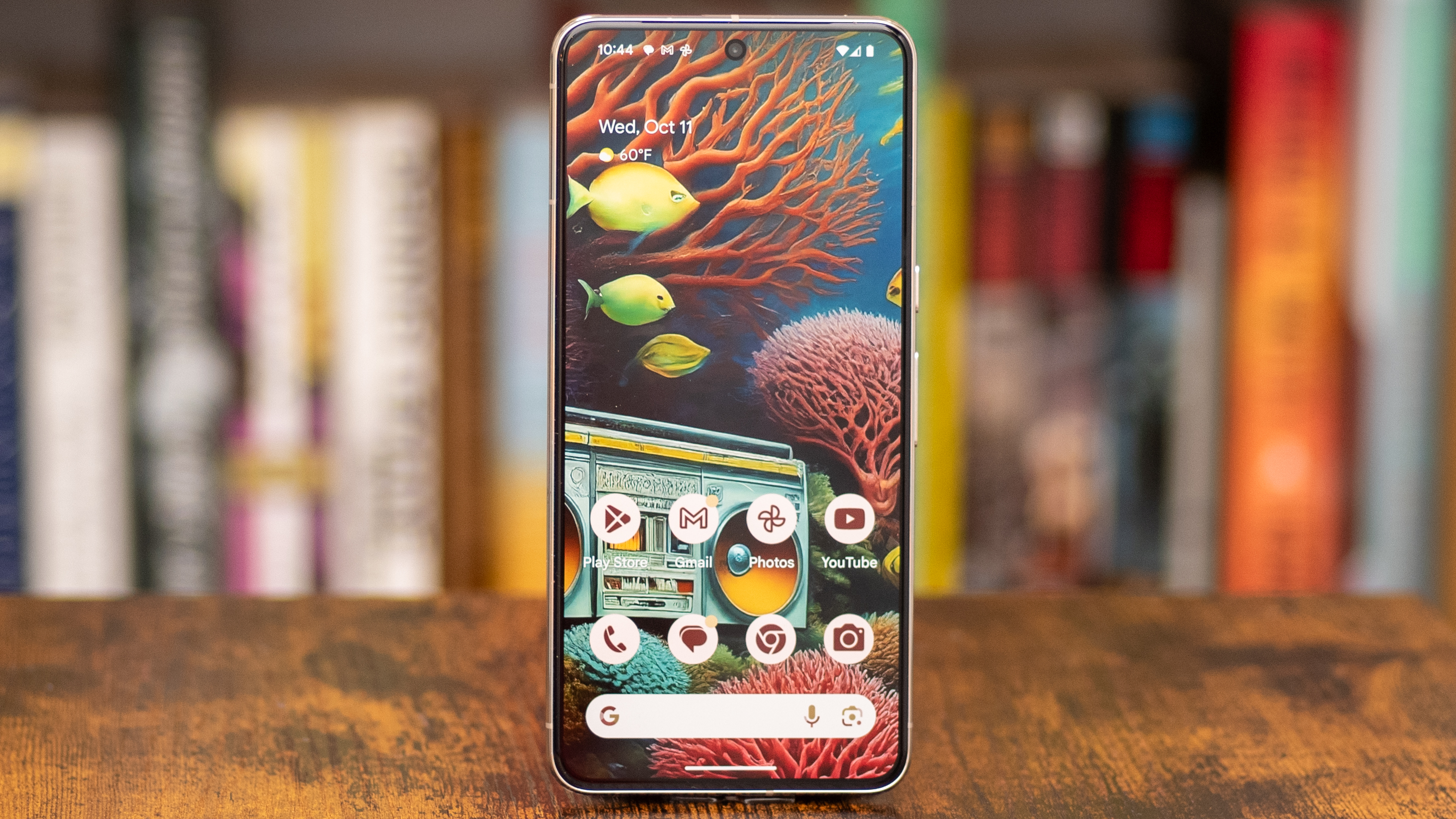
The Google Pixel 8 Pro is the newer phone of the two, having arrived on October 12, 2023. That’s more than a year on from the iPhone 14 Pro's release date, which landed on September 16, 2022.
It’s interesting to compare pricing. The Pixel 8 Pro starts from $999 / £999 / AU$1,699 for the 128GB model. Upgrading to the 256GB model costs $1,059 / £1,059 / AU$1,799, while the 512GB model costs $1,179 / £1,179 / AU$1,999. In the US, the 1TB model costs $1,399, but this variant isn’t available in the UK or Australia.
With the iPhone 14 Pro, things are a little less cut and dried. At launch, the 128GB model costed $999 / £1,099 / AU$1,749, while the 256GB model would set you back $1099 / £1,209 / AU$1,899. There was also a 512GB model for $1,299 / £1,429 / AU$2,249, and a 1TB model for $1,499 / £1,649 / AU$2,5999.
Sign up for breaking news, reviews, opinion, top tech deals, and more.
Apple doesn’t sell the iPhone 14 Pro as new any more, but you can still pick one up brand new from mobile networks and third party retailers. Here in the UK, the phone still doesn’t represent great value given the fact that the launch price dropped by £100 for the iPhone 15 Pro.
So, for example, at the time of writing you can get a 128GB iPhone 14 Pro from Amazon for £972.58. Sure, that’s About £127 less than the launch price, but £27 more will get you an iPhone 15 Pro (or indeed a brand new Pixel 8 Pro).
Given the difficulty in getting an iPhone 14 Pro at a decent discount, as well as its age, we’d have to give the win here to the Pixel 8 Pro.
Google Pixel 8 Pro vs iPhone 14 Pro: design and display
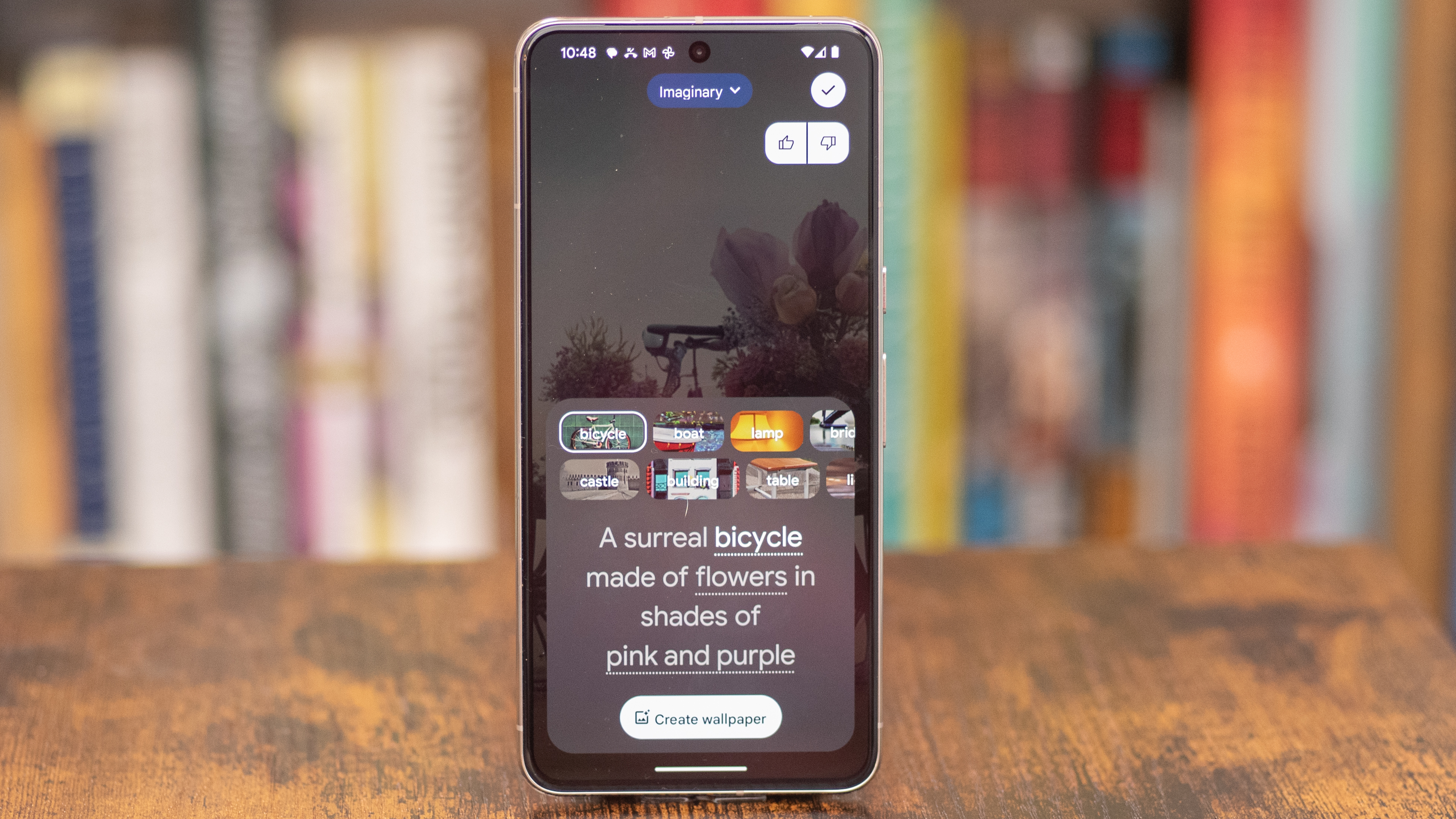
Apple and Google’s approach to hardware design has diverged over the years.
The iPhone 14 Pro sports flat surfaces and a flat shiny rim, which is as sharp-edged as it is shiny. Around back, there’s a no-nonsense, vaguely square camera module that we wouldn’t call ugly, but nor would we stretch to call it attractive.
As for the Pixel 8 Pro, it’s all curves, with a rounded frame and a similarly curvaceous back. The camera module, meanwhile, is the phone’s key focal point, spanning the width of the handset before tapering seamlessly into the frame.
We should mention that the Pixel 8 Pro also has a new temperature sensor on the back, which the iPhone 14 Pro lacks. It’s pretty much useless, though – especially with no officially endorsed medical application – so we can’t really note it as a win.
Google’s phone is bigger in every way, with a footprint of 162.6 x 76.5mm against the iPhone 14 Pro’s 147.5 x 71.5mm. Google’s phone is about a millimetre thicker, and it weighs 7g more. If you were expecting the weight difference to be more pronounced owing to the size difference, that comes down to Apple using stainless steel rather than aluminium in the frame, which is a tougher but heavier material.
Around front, the iPhone 14 Pro was the first iPhone to gain Apple’s Dynamic Island display and camera cutout. This extended lozenge eats into the display way more than the Pixel 8 Pro’s hole-punch notch, but enables a more advanced facial authentication system as well as a handy heads-up UI.
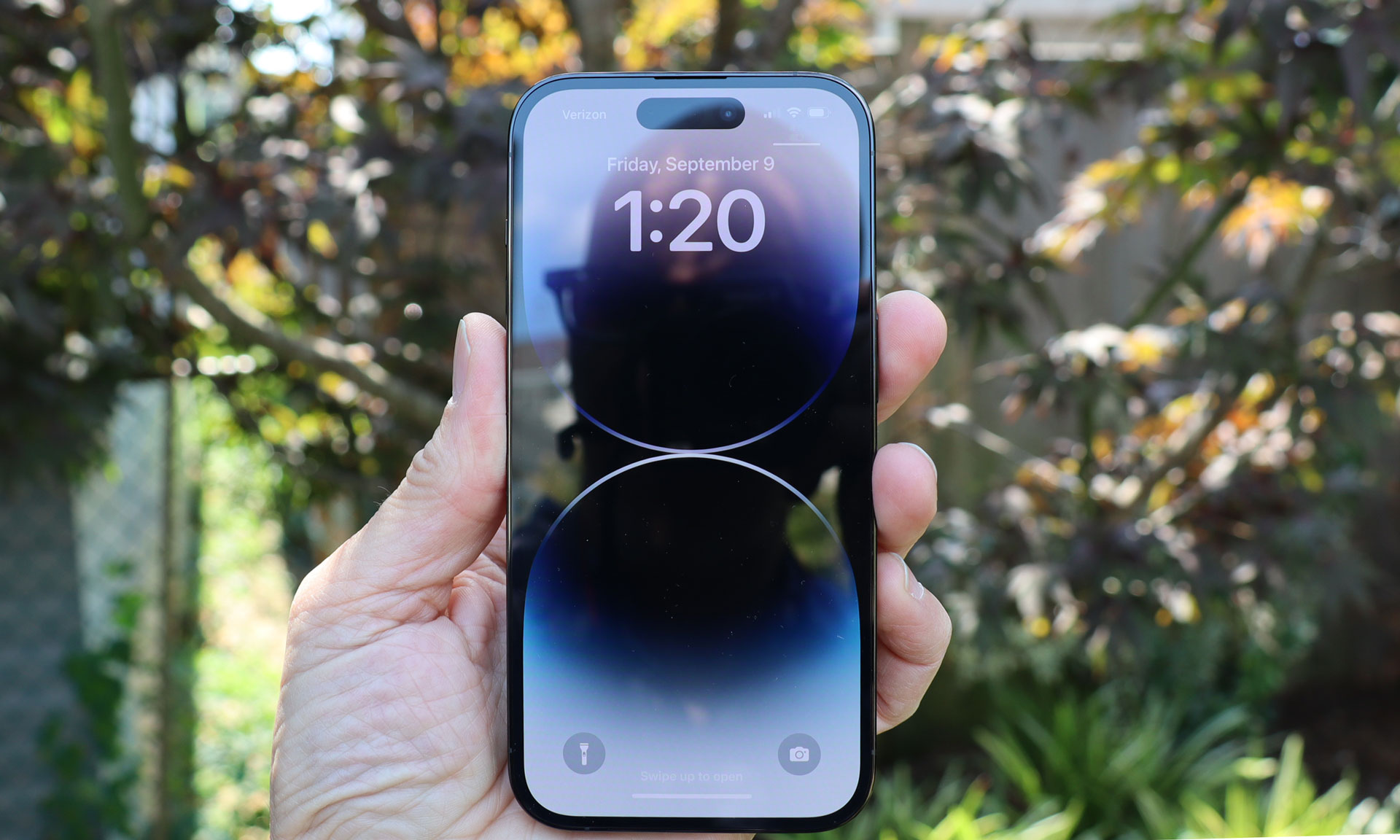
Switching our attention to the bottom of these phones, the Pixel 8 Pro gives you a USB-C port, while the iPhone 14 Pro was the last to carry Apple’s Lightning standard. What with USB-C being much more widely adopted, that’s a small win for Google.
The Pixel 8 Pro earns its bigger footprint by cramming in a larger display. At 6.7 inches, it’s a considerably bigger canvass than the iPhone 14 Pro’s 6.1-inch equivalent.
Bigger isn’t necessarily better when it comes to displays. For playing media and surfing the web, there’s definitely an advantage to having more space. But if you prefer a phone that can be used one-handed, and that can slip into small pockets, smaller is obviously preferable.
In terms of sheer quality, both screens are vibrant OLEDs. The Pixel 8 Pro screen is slightly sharper, with a 1344 x 2992 resolution producing 489 ppi. With the iPhone 14 Pro it’s 1179 x 2556 and 461 ppi, though the smaller size means any difference is imperceptible.
Both screens feature smooth 120Hz refresh rates, and can dip right down to 1Hz in the name of efficiency. This also allows both to run always-on displays without sucking the power. Apple has chosen to go with a busier wallpaper-like view, which has proved somewhat divisive.
One area where the Pixel 8 Pro screen has a clear advantage is brightness, with a maximum output of 2400 nits comparing favourably to the iPhone 14 Pro’s 2000 nits.
Google Pixel 8 Pro vs iPhone 14 Pro: cameras
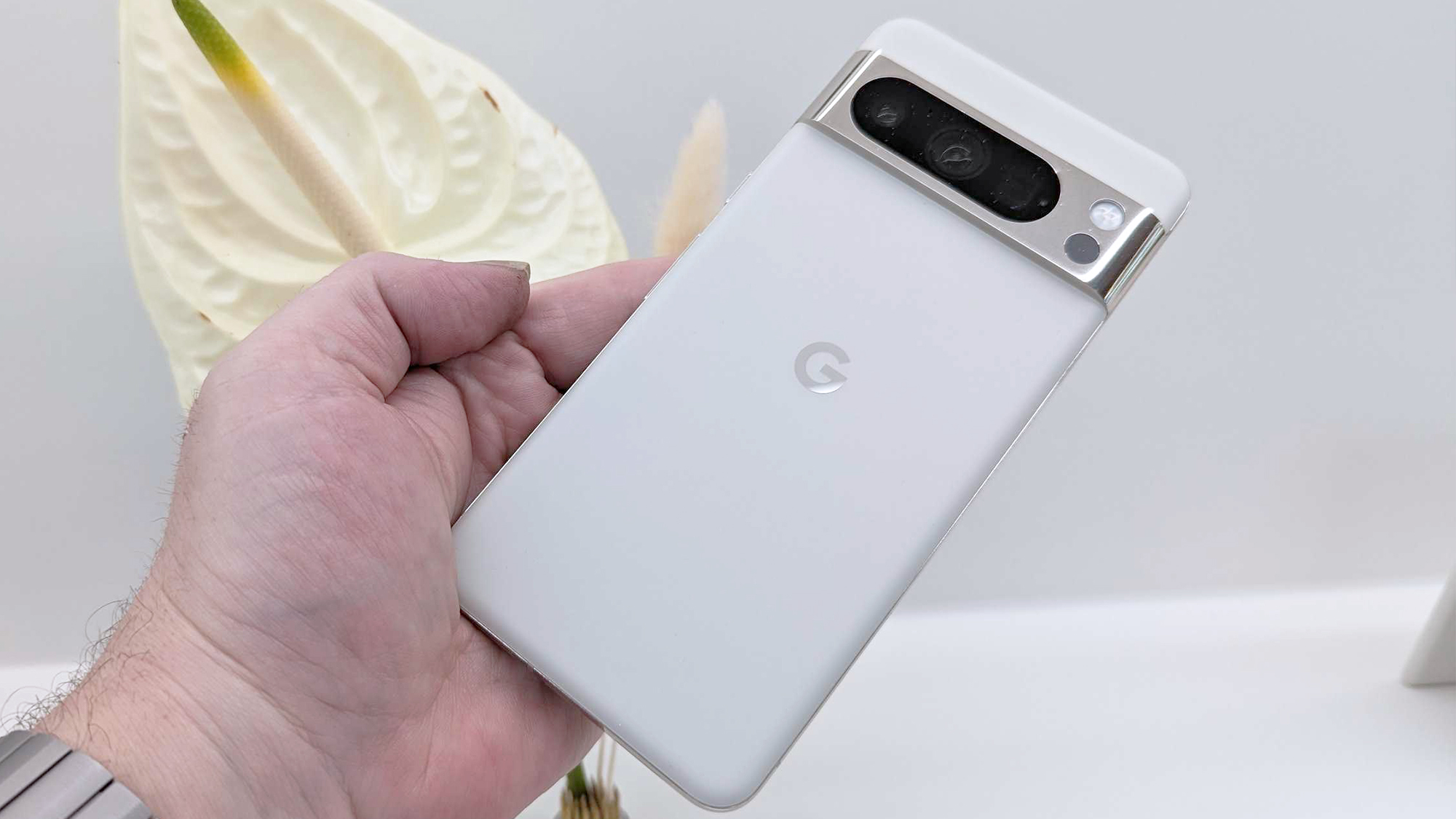
Apple and Google are two of the very best when it comes to creating sharp, intuitive, well-balanced camera systems.
Both of these phones give you triple set-ups. With the iPhone 14 Pro, that means a 1/1.28“ 48MP main sensor, a 12MP 3x telephoto, and a 12MP ultra-wide. With the Pixel 8 Pro, it’s a 1/1.31” 50 MP main, a 48MP 5x telephoto, and a 48MP ultra-wide.
Broadly speaking, Apple has a slight advantage with its larger main sensor (which also has superior sensor shift image stabilisation), while Google has a more pixel-packed telephoto camera that zooms in much further.
Such hardware specs aren’t really what provides the difference here, though. Both of these companies excel at image processing, though it manifests itself in different ways.
Shots taken with the iPhone 14 Pro are more naturalistic, adhering to more traditional photographic principles to provide balanced, detailed shots. The Pixel 8 Pro, meanwhile, produces extremely cool and contrasty shots that really pop off the screen.

Apple iPhone 14 Pro camera samples
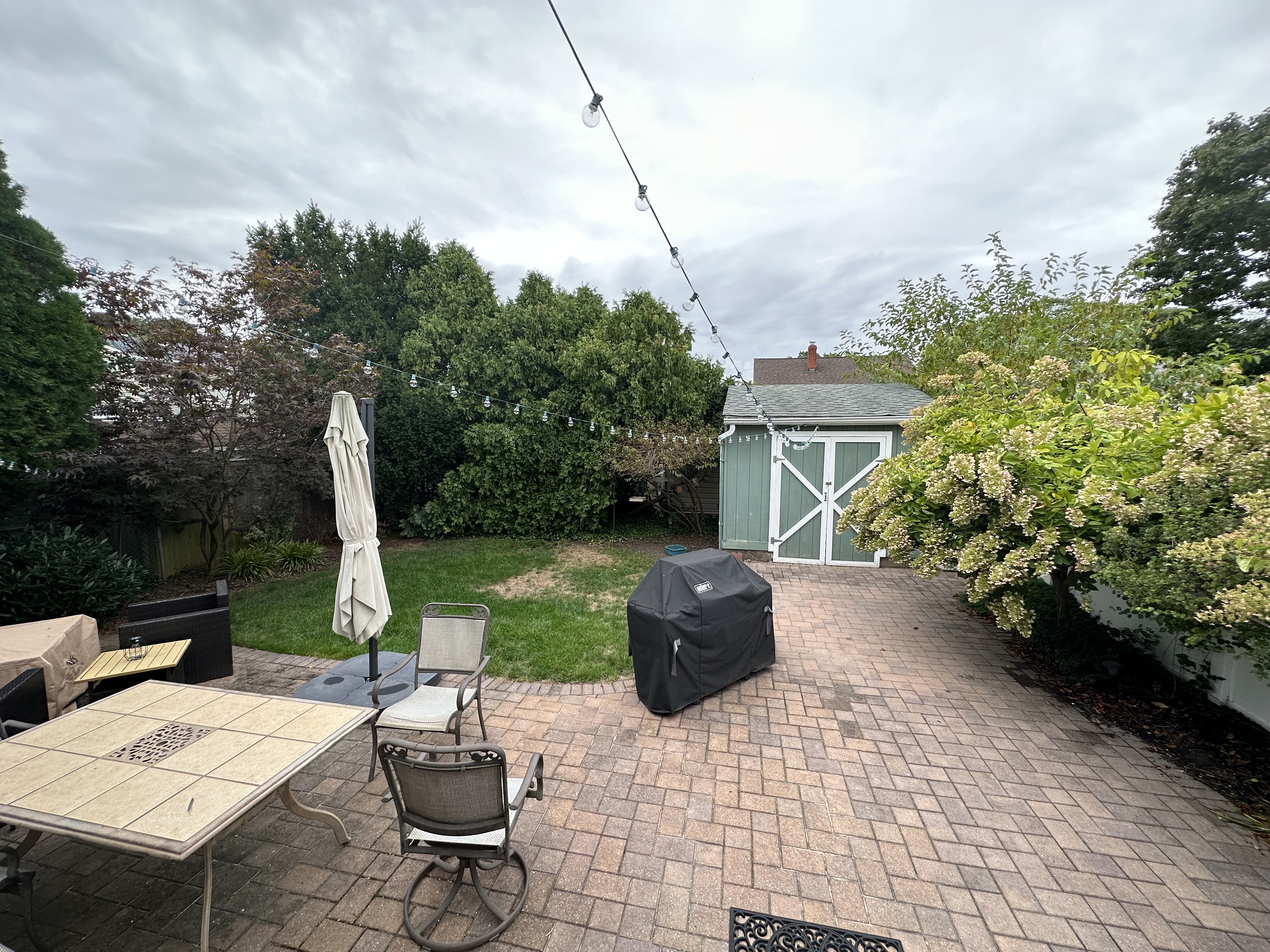
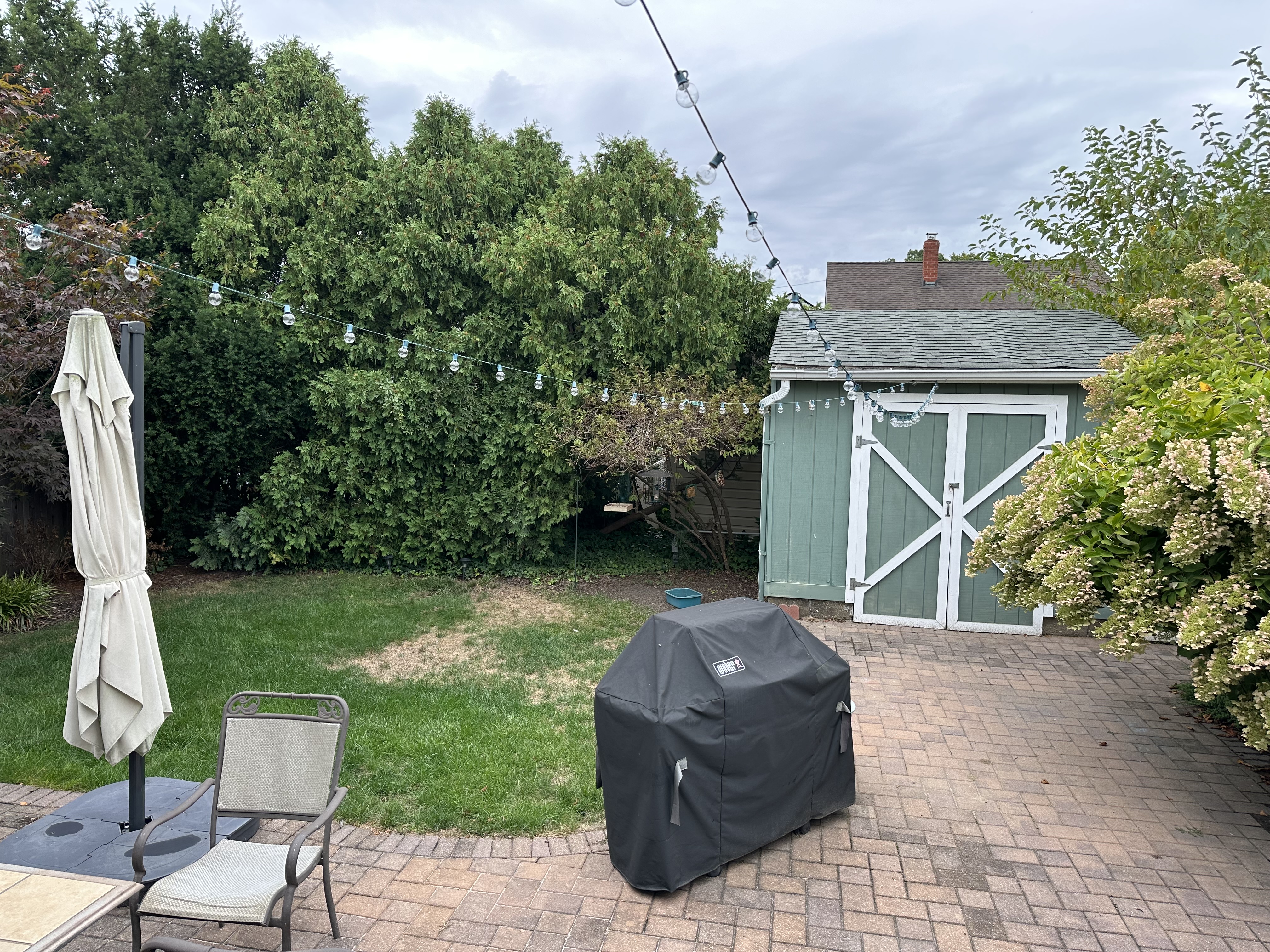
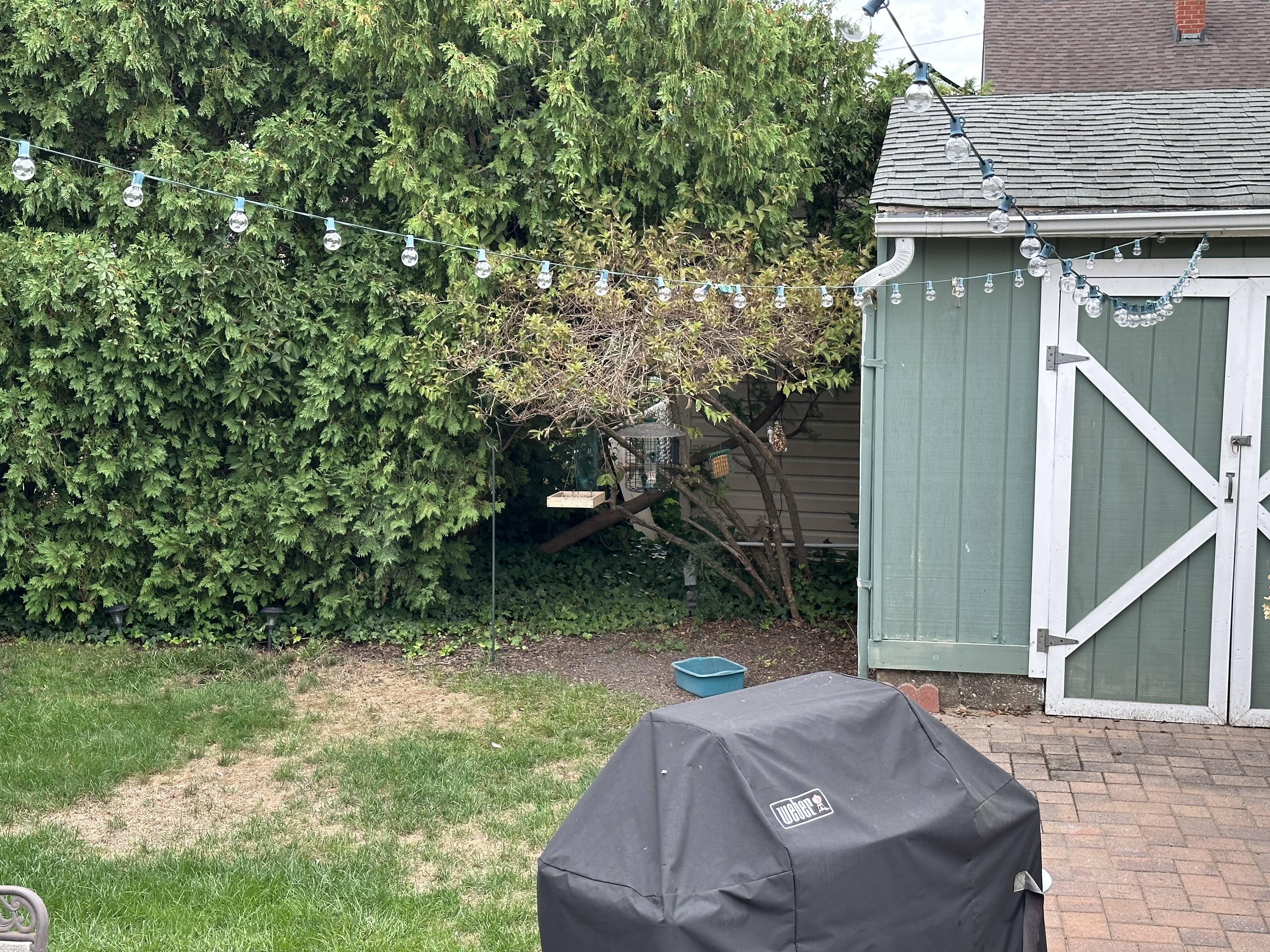
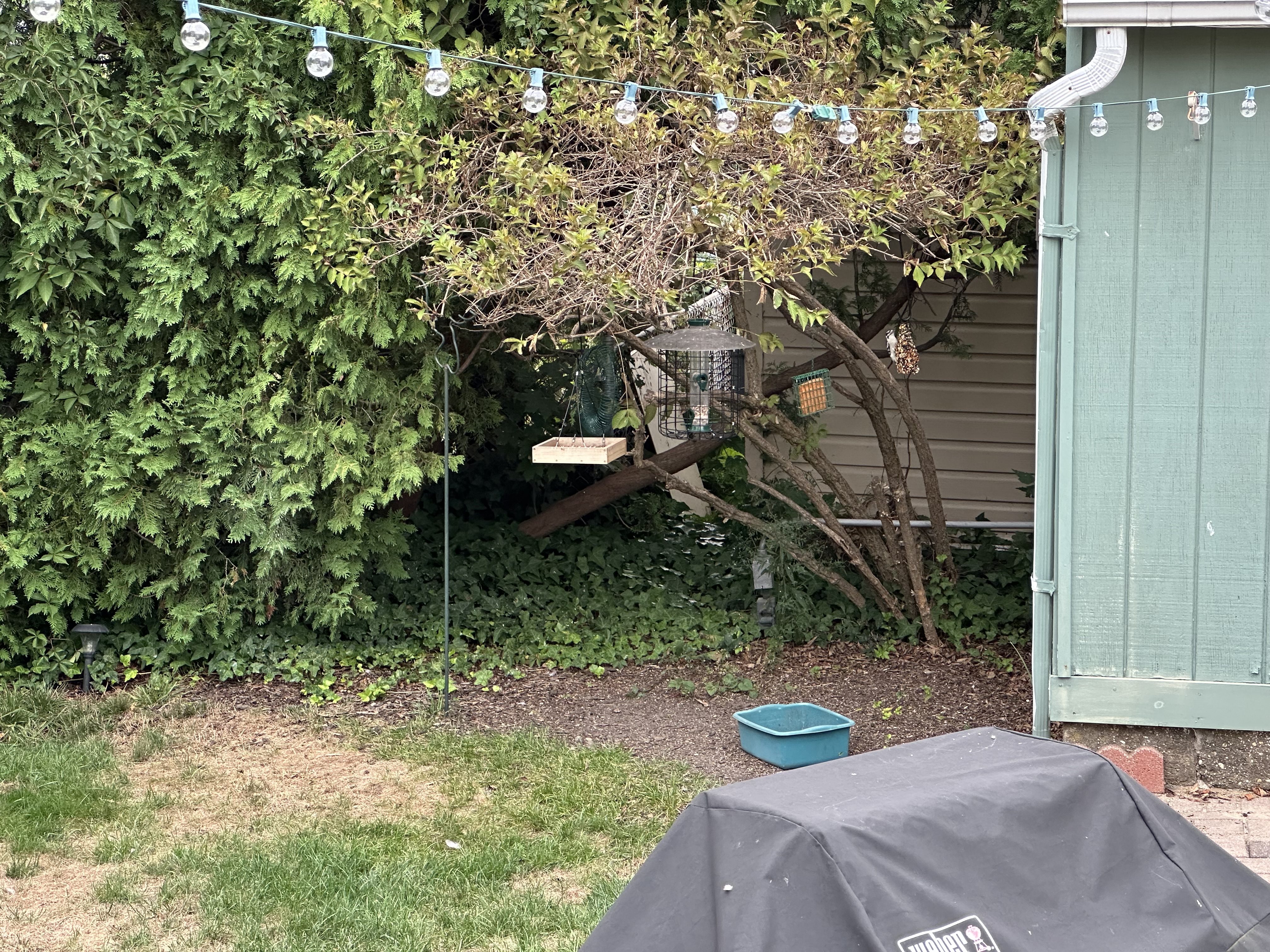



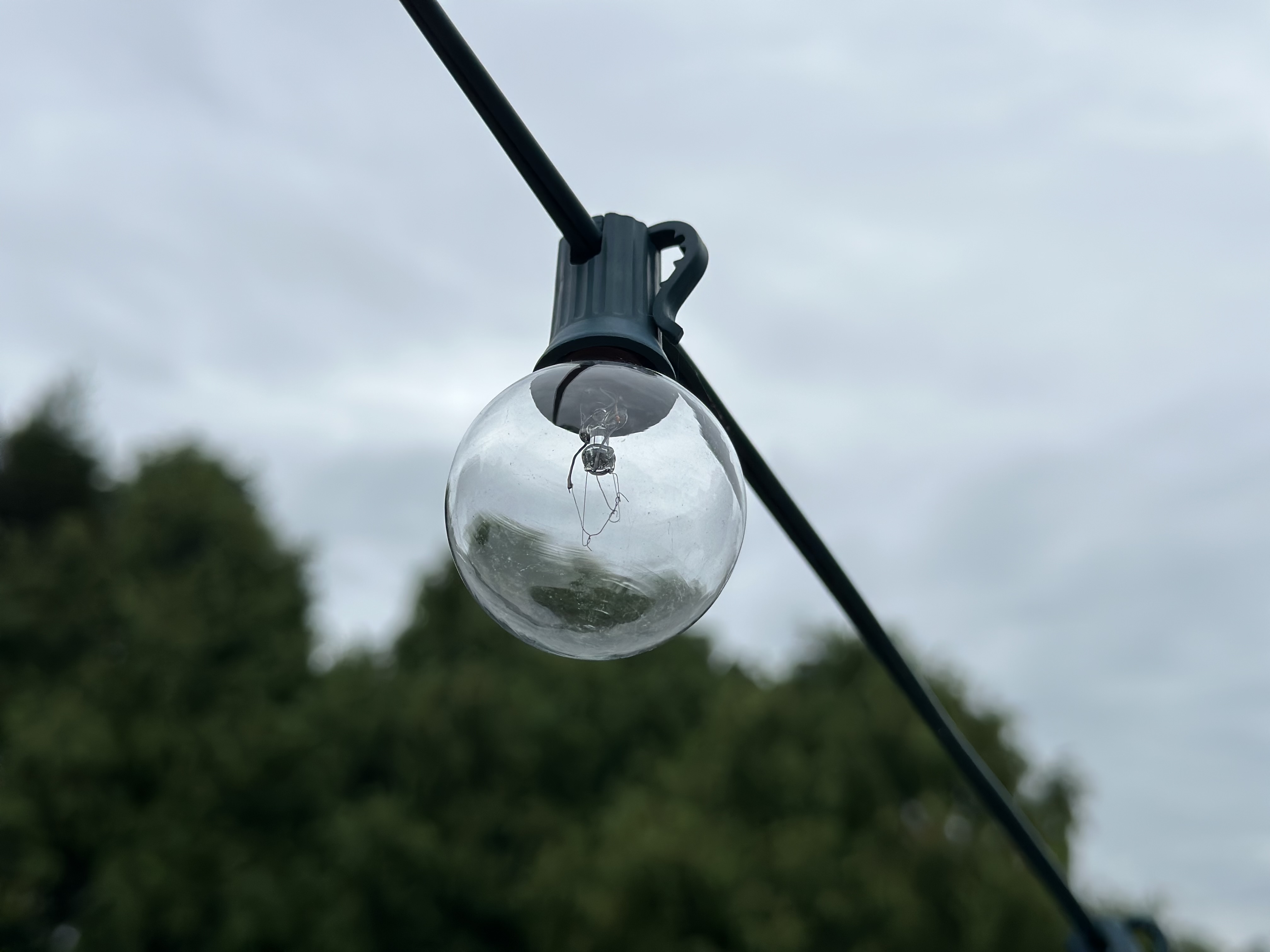


Google’s night shots are almost eerily bright, while Apple’s are a little closer to the scene before your eyes. Opinion tends to vary over which is preferable here.
With the Pixel 8 Pro, you’re getting some interesting AI features that help you adjust the look of a picture after it’s been taken. You can remove unwanted background elements, adjust the look of the sky, and even make it so that everyone is smiling in a group shot.
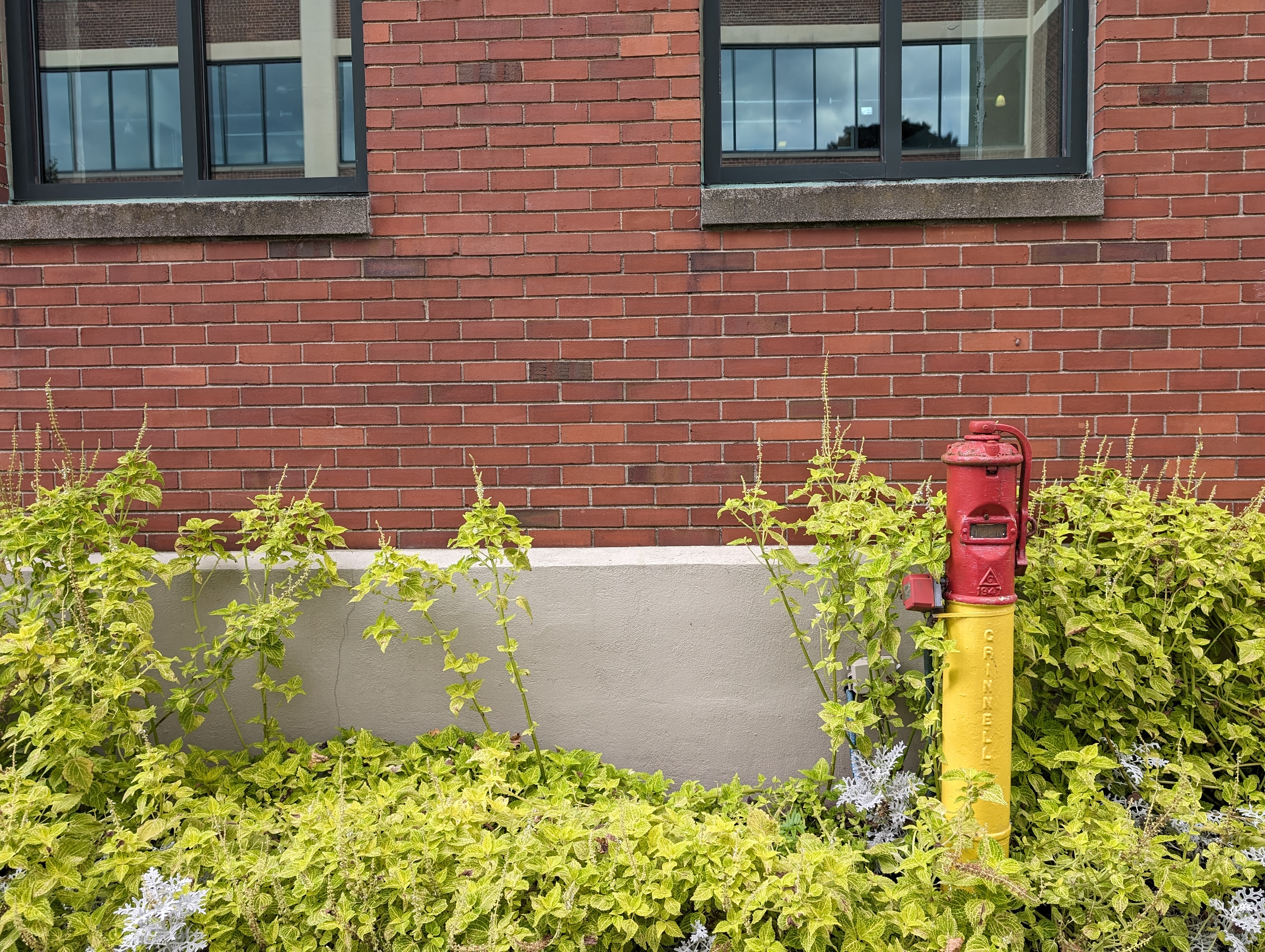
Google Pixel 8 Pro camera samples







It’s also worth highlighting that the iPhone is, as ever, the video-taking master. No one handles footage better.
All in all, it’s near-impossible to call a winner with these two camera systems. Each has its particular strengths, though the fact that both take excellent, crisp shots in all conditions means that this probably shouldn’t be the deciding factor in any choice.
Google Pixel 8 Pro vs iPhone 14 Pro: performance and software
You might think that the Pixel 8 Pro holds the advantage when it comes to raw performance, owing to the fact that it’s a whole year younger. But you’d be wrong.
Apple has such a lead with its custom silicon, and Google is trailing to such a degree, that the iPhone 14 Pro handily beats the Pixel 8 Pro by most CPU and GPU metrics.
True, the Pixel 8 Pro has double the RAM (6GB vs 12GB), but that really doesn’t mean an awful lot given that iOS generally runs more efficiently than Android.
Google claims that AI is its focus, with the Tensor G3’s machine learning chops enabling things like real time transcription and those smarty pants image editing tricks. One cool trick is the way Pixel phones can constantly listen out for and track playing music.
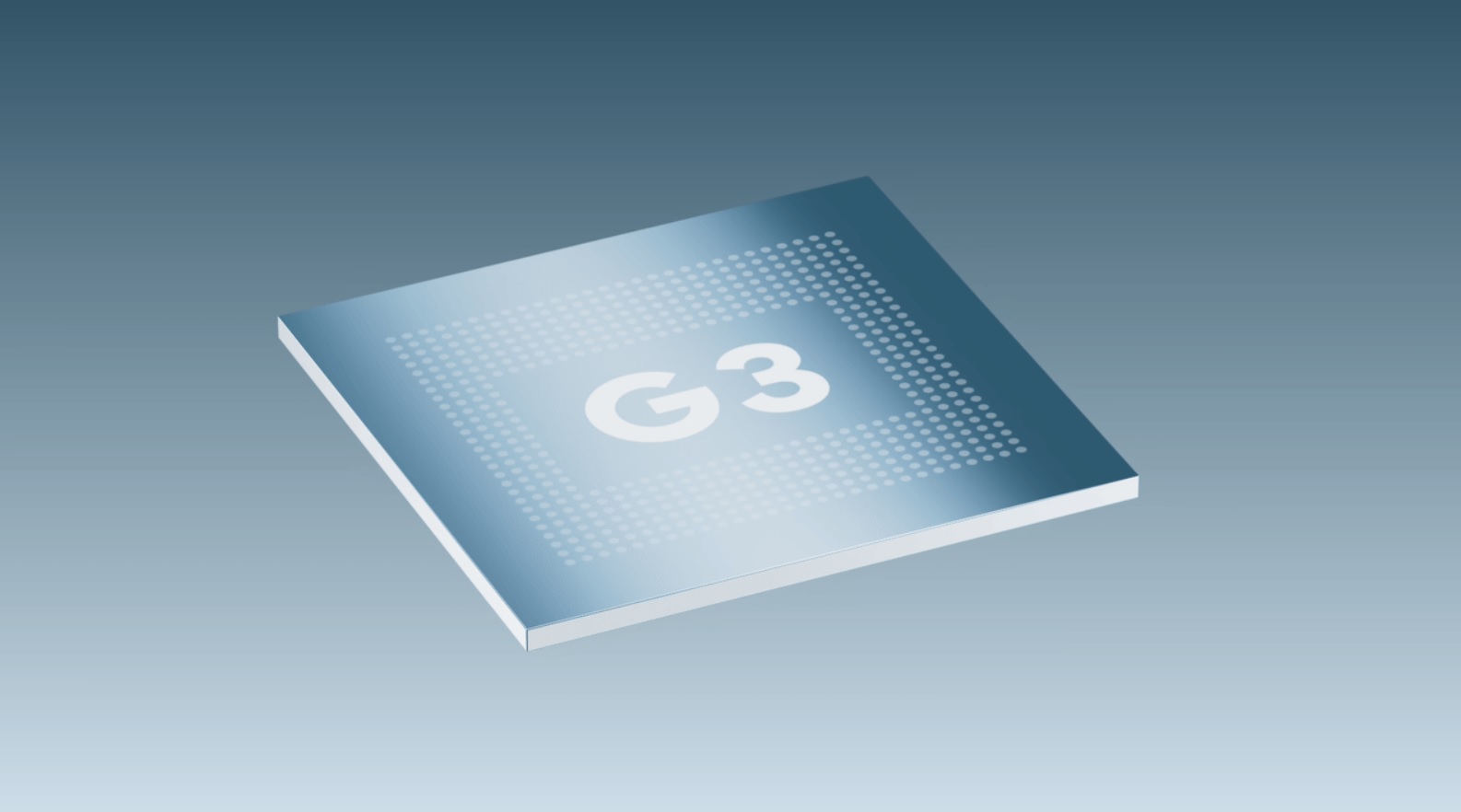
In day to day use, you won’t notice the difference here. Both of these phones run extremely well, whether multi-tasking, hopping between web tabs, or playing high-end games like Genshin Impact.
However, with both phones due to be supported for years to come, we suspect that the iPhone 14 Pro will feel faster in three or four years’ time.
On that latter point, Google really stirred things up in promising seven years of software updates for the Pixel 8 Pro. With Apple tending to support its phones for five years, it’ll could well fall three years short of its rival.
Conversely, only one company has a track record of long term support here, and it isn’t Google. We’d like to take the company at its word, but it has an unfortunate record of ditching its software initiatives and moving on to something else.
In terms of the software as it exists today, it largely comes down to personal preference and previous choices. If you’ve bought multiple apps on one of these app stores, you’ll probably want to stick with that platform.
Both of these operating systems are mature by this point, with slick and intuitive UIs and powerful features. They’re excellent operating systems, and these phones show them at their very best.
Google Pixel 8 Pro vs iPhone 14 Pro: battery
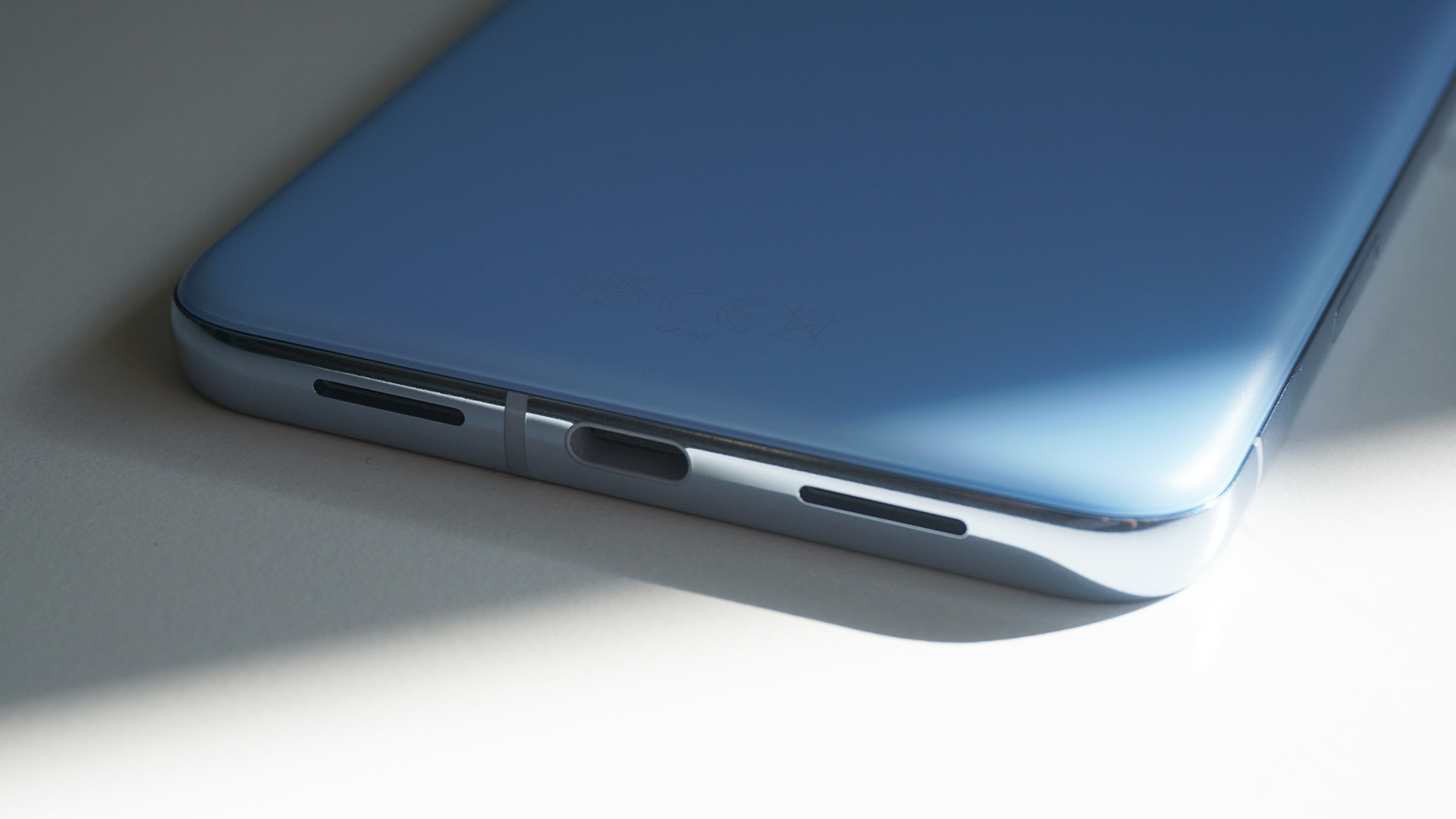
You’d expect a larger battery from the Pixel 8 Pro, given its physical dimensions, and so it proves. Google’s phone has a pretty large 5,050mAh battery compared to the iPhone 14 Pro’s 3,200mAh cell.
That doesn’t really figure into the relative stamina of these two phones, though. As we mentioned earlier, iOS runs more efficiently than Android.
There’s also the fact that the Pixel 8 Pro’s battery is driving a much larger, sharper, and brighter display, while the Tensor G3 isn’t the most energy efficient of chips. In both cases, you’re looking at a phone that will get you through a full day of heavy use with relative ease.
Neither Google nor Apple gives you a charger in the box, and neither phone recharges especially fast. The Pixel 8 Pro supports 30W wired charging, while the iPhone 14 Pro supports up to 27W, though it's official charger kicks out only 20 watts. Given the appropriate charger for the job, both will get you to 50% in around 30 minutes.
Both also support Qi wireless charging, plus something a little more. With the iPhone 14 Pro it’s 15W MagSafe, which is the magnetised foundation for the Qi2 standard. With the Pixel 8 Pro it’s 23W wireless charging, provided you buy the Pixel Stand accessory.
Google Pixel 8 Pro vs iPhone 14 Pro: verdict
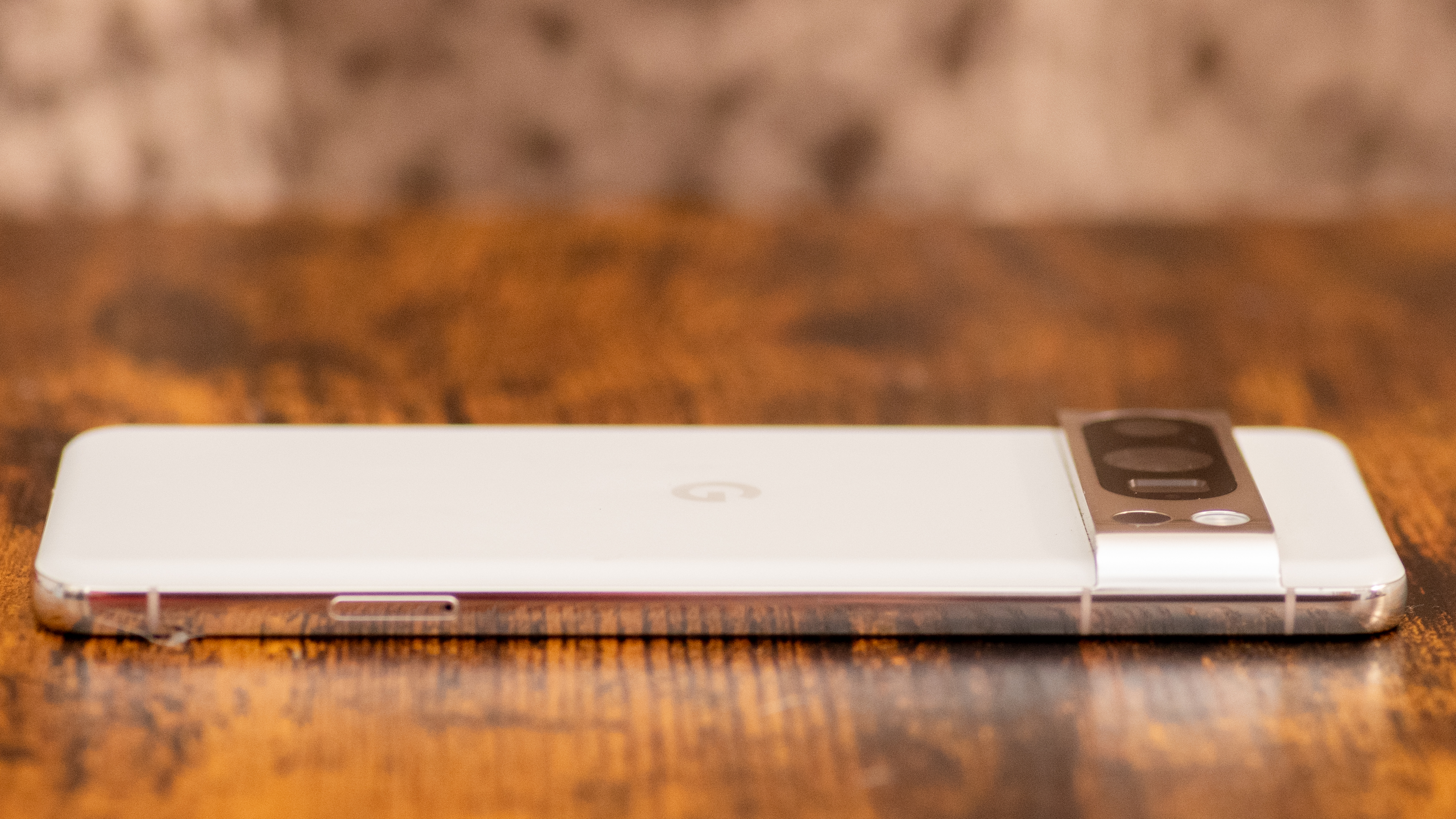
While we rated the iPhone 14 Pro a little higher than the Pixel 8 Pro in their respective reviews, the differences and caveats are such that you really need to weigh up what you want from your phone.
The Pixel 8 Pro is the newer phone of the two, and together with Google’s seven year update promise is arguably the more future-proof. Conversely, Apple has a much better track record with such legacy support, and the iPhone 14 Pro is a more capable performer despite its age.
If media consumption is a priority, then the Pixel 8 Pro’s larger, brighter display might come into the equation. Conversely, the iPhone 14 Pro’s compactness will be a defining virtue to anyone who appreciates easy one-handed use and portability.
Camera quality needn’t be a deciding factor here, nor should battery life. They’re broadly even in both respects, even if each has its strengths and weaknesses.
Ultimately, your choice should probably come down to which platform you prefer: iOS or Android, as well as how large you like your phones and whether you can secure a good deal for yourself.

Jon is a freelance journalist who has been covering tech since the dawn of the smartphone era. Besides TechRadar, his words and pictures have appeared in The Telegraph, ShortList, Tech Advisor, Trusted Reviews, Expert Reviews, and more. He largely covers consumer technology, with a particular focus on smartphones and tablets. However, he's also been known to dabble in the worlds of entertainment and video games.